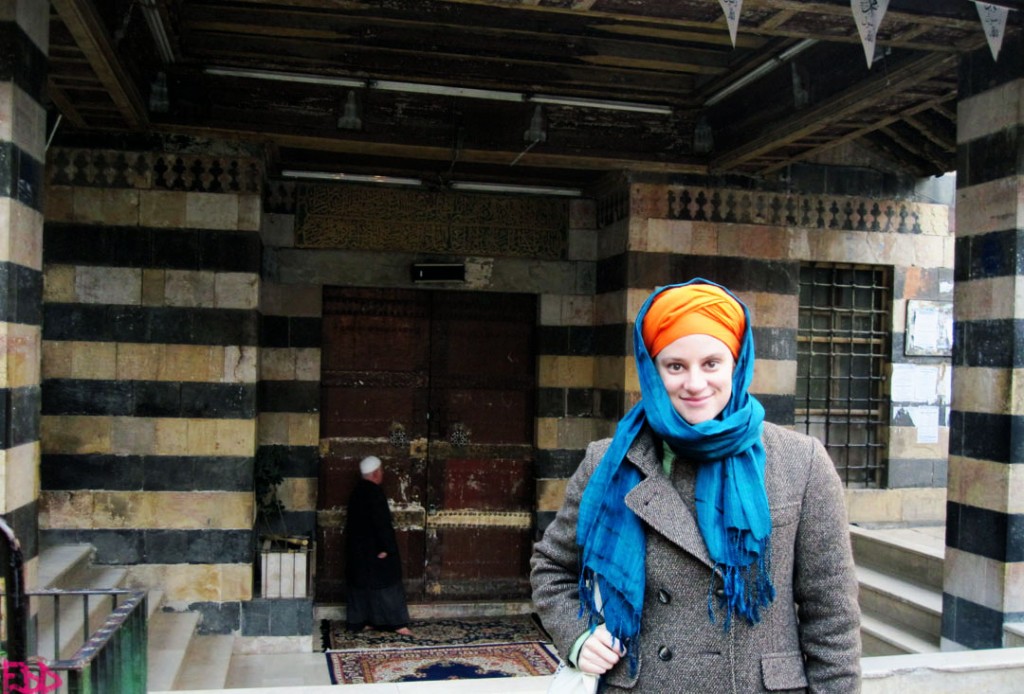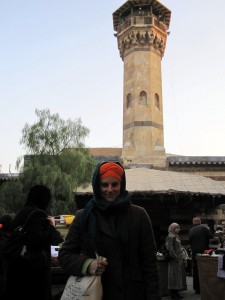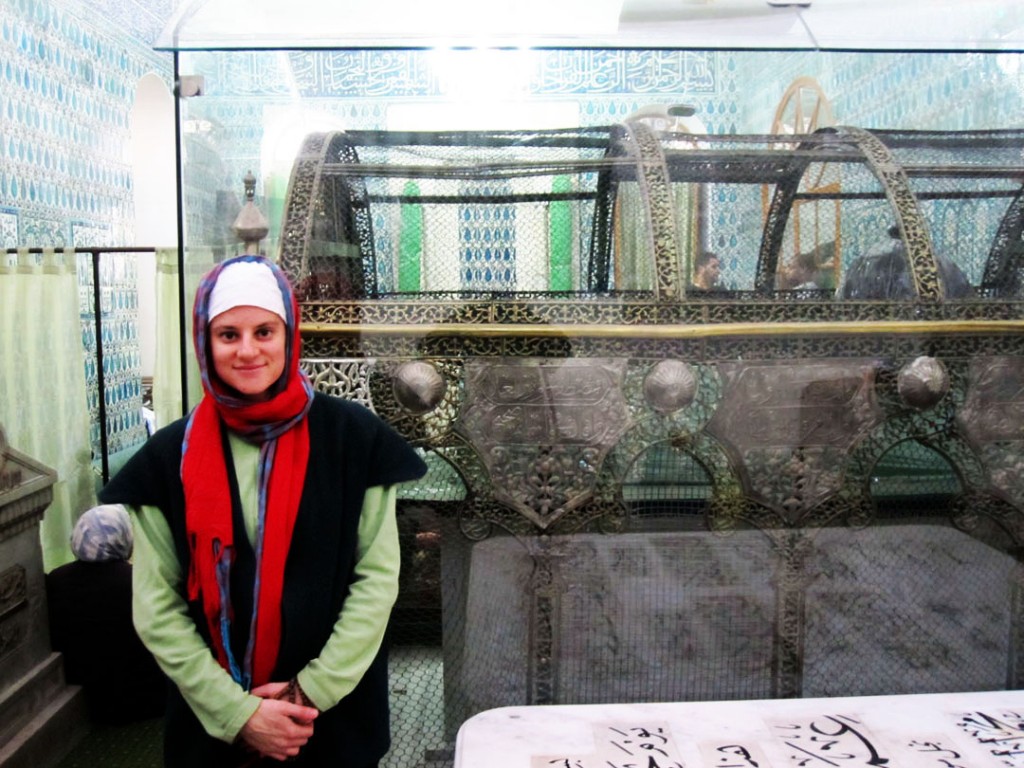
Visiting Ibn Arabi's tomb in Syria (Photo: Emily O'Dell)

Minaret of Ibn Arabi (Photo: Emily O'Dell)
O Marvel! A garden among the flames!
My heart has become capable of any form:
it is a meadow for gazelles and a monastery for monks,
a temple for idols and a Ka’ba for pilgrims,
the tables of the Torah and the scrolls of the Qur’an.
I profess the religion of love: wherever its caravan turns on the way,
that is my belief and faith.
— Ibn Arabi (d. 1240)
As a young man, Ibn Arabi — the great Muslim philosopher whose tomb I visited in Syria — studied with several spiritual teachers. Sufis refer to him as al-Shaykh al-Akbar — the Greatest Master. Ibn Arabi discusses some of his own mystic masters in his book on the Sufis of Andalusia — including a wise woman named Fatimah:
She lived in Seville. When I met her, she was in her nineties. Looking at her in a purely superficial way, one might have thought she was a simpleton, to which she would have replied that he who knows not his Lord is the real simpleton. She used to say ‘Of those who come to see me, I admire none more than Ibn ‘Arabi’. When asked the reason for this, she replied, ‘The rest of you come with part of yourselves, leaving the other part of you occupied with your other concerns, while Ibn ‘Arabi is a consolation to me, for he comes with all of himself. When he rises up, it is with all of himself, and when he sits it is with his whole self, leaving nothing of himself elsewhere. This is how it should be on the Way.’

Paying my respects to Ibn Arabi in Damascus (Photo: Emily O'Dell)